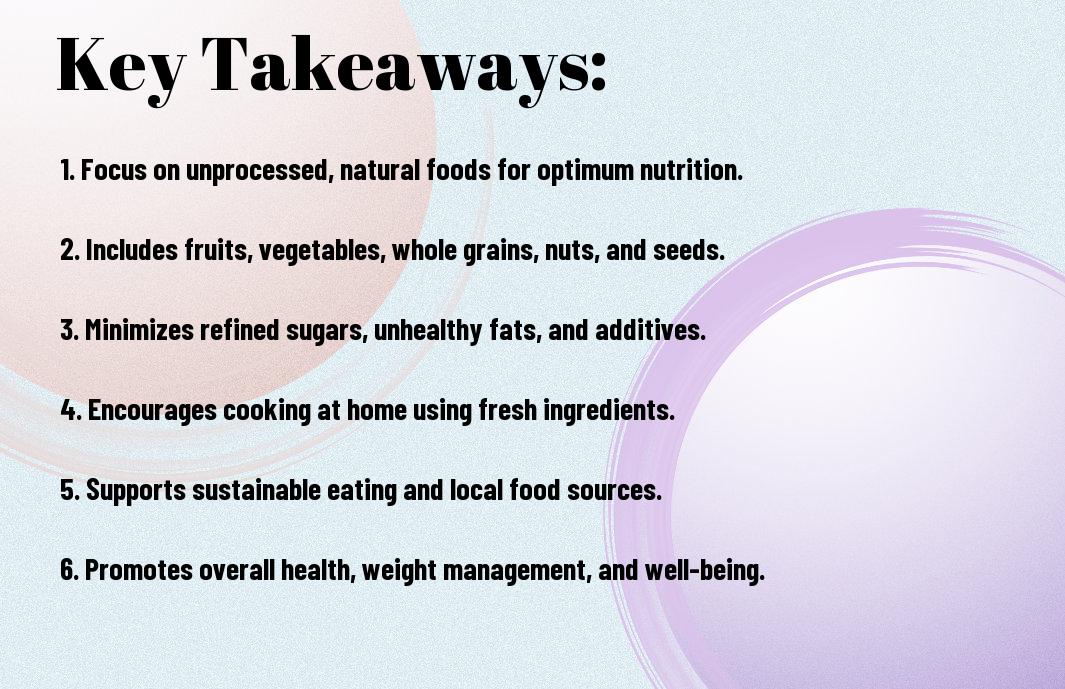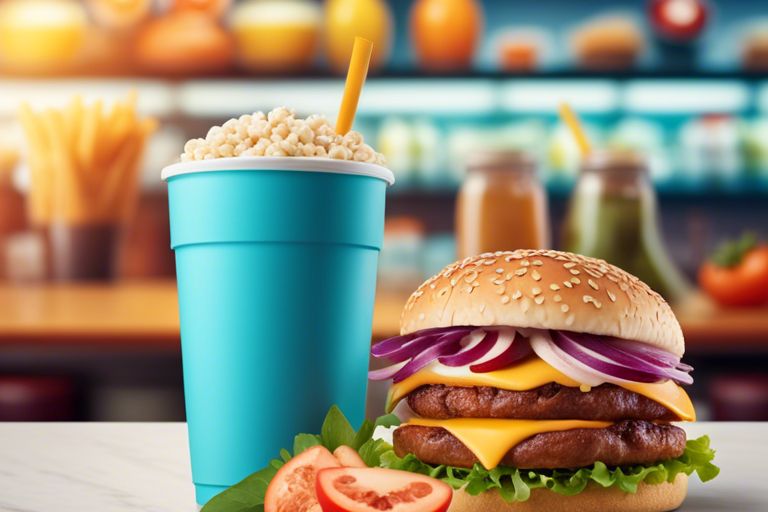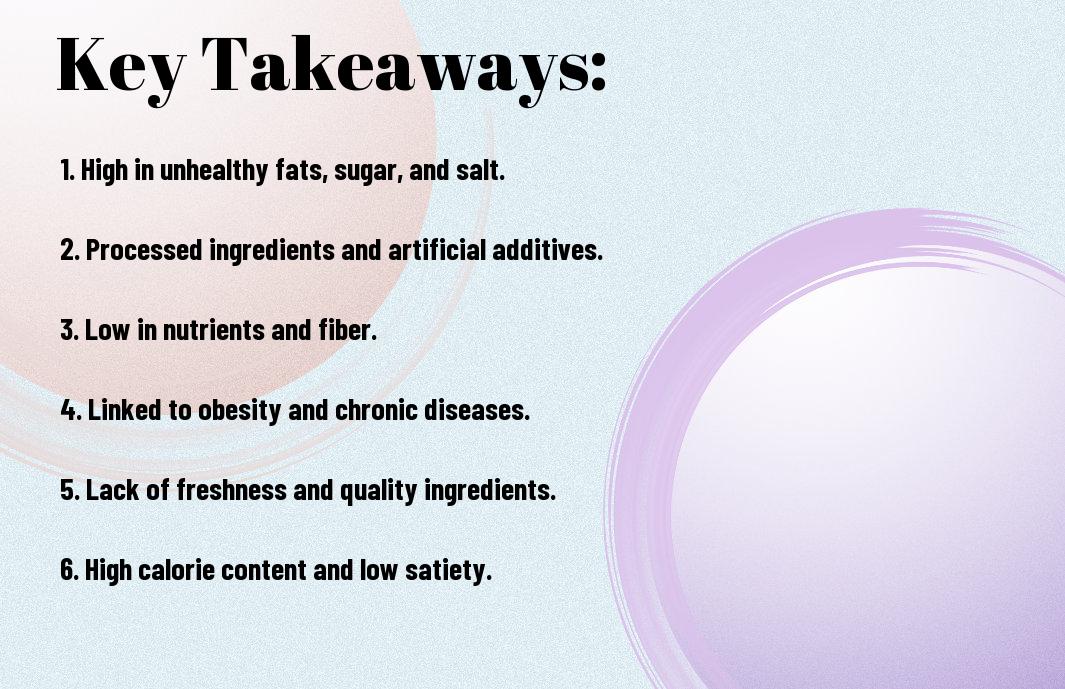Most people find it challenging to meet the recommended daily intake of fiber, which is about 30 grams. Ensuring you consume enough fiber is necessary for maintaining digestive health and can aid in weight management. In this post, you will discover practical tips and food choices that can help you easily reach this target, from incorporating more fruits and vegetables to choosing whole grains and legumes. By understanding the best sources of fiber and adjusting your diet, you can effortlessly enhance your nutrition and support your overall wellness.

Key Takeaways:
- Incorporate Whole Grains: Choose whole grain bread, pasta, and brown rice, which are higher in fiber compared to their refined counterparts.
- Add Fruits and Vegetables: Aim for at least 5 servings of fruits and vegetables daily; options like berries, apples, carrots, and broccoli are great fiber sources.
- Snack Smartly: Opt for high-fiber snacks such as nuts, seeds, and legumes, which can help you reach your 30g fiber goal throughout the day.
Understanding Fiber
Before you can increase your fiber intake, it’s important to understand what fiber is and how it works in your body. Fiber is a type of carbohydrate that the body can’t digest, and it plays a key role in maintaining digestive health, regulating blood sugar levels, and keeping your heart healthy.
Types of Fiber
About fiber, there are two main types: soluble and insoluble. Each type offers different health benefits and is found in various foods:
| Type | Sources |
| Soluble Fiber | Oats, beans, fruits, and chia seeds |
| Insoluble Fiber | Whole grains, nuts, and vegetables |
| Benefits | Helps with digestion and promotes feelings of fullness |
| Daily Intake | Aim for 30 grams a day |
- Soluble fiber dissolves in water and helps lower cholesterol.
- Insoluble fiber adds bulk to the stool and aids in digestion.
- A variety of high-fiber foods exists, including fruits, vegetables, nuts, and whole grains.
- Incorporating different fibers into your diet can enhance health benefits.
- After understanding these types, you can plan your meals accordingly.
Health Benefits of Fiber
To improve your overall well-being, incorporating more fiber into your diet can significantly contribute to numerous health benefits. It aids in digestion, regulates blood sugar levels, lowers cholesterol, and helps you maintain a healthy weight.
Fiber plays an necessary role in preventing constipation and promoting a healthy gut. Additionally, fiber-rich diets may lower the risk of developing heart disease, diabetes, and certain types of cancer. By making conscious choices to include fiber in your meals, you’re investing in long-term health and vitality.

Recommended Daily Intake
Any adult should aim for about 25 to 30 grams of fiber each day, depending on age and sex. Meeting this target can enhance your digestive health, aid weight management, and reduce the risk of chronic diseases. Understanding your individual fiber needs is vital for maintaining a balanced diet and improving your overall well-being.
Dietary Guidelines
Against common misconceptions, achieving your fiber intake can be simple by incorporating a diverse range of foods into your meals. The Dietary Guidelines for Americans suggest focusing on whole grains, fruits, vegetables, legumes, and nuts to help you reach this goal.
Sources of Fiber
After reviewing dietary guidelines, you’ll find that fiber sources are abundant and varied. Emphasizing whole foods such as fruits, vegetables, beans, and whole grains not only adds flavor to your meals but also helps you meet your fiber intake effortlessly.
Hence, incorporating a variety of fiber-rich sources into your diet is key. Aim for foods like lentils, chickpeas, oats, and berries, as they are loaded with fiber and vital nutrients. Snacking on nuts, seeds, and fresh fruits can also significantly contribute to your daily fiber intake while promoting satiety. By diversifying your meals with these items, you can easily achieve your target of 30 grams of fiber each day.
Practical Tips for Increasing Fiber Intake
Many people struggle to reach their daily fiber goals, but incorporating simple strategies can help. Consider these tips to boost your fiber intake:
- Start your day with whole grain cereals.
- Add legumes to salads and soups.
- Choose whole grain bread over white bread.
- Snack on nuts, seeds, and fruits.
- Incorporate veggies into every meal.
Knowing these strategies can empower you to easily increase your fiber consumption.
Meal Planning
An effective way to ensure you get enough fiber is through thoughtful meal planning. Start by identifying high-fiber foods you enjoy, such as whole grains, fruits, and vegetables. Create a weekly menu that incorporates these items, and aim to include a mix of different sources to keep your meals balanced and interesting.
Snack Options
On your journey to 30g of fiber a day, snacking can play an important role. Selecting fiber-rich snacks can make a significant difference in your daily intake. Instead of reaching for processed snacks, opt for fruits, raw vegetables, whole grain crackers, or air-popped popcorn.
With some creativity, you can transform your snacking habits to include high-fiber options. Consider preparing veggie sticks with hummus, yogurt topped with berries and granola, or baked sweet potato fries as delicious alternatives. These snacks not only satisfy your hunger but also contribute to your fiber goals effortlessly.
High-Fiber Foods to Incorporate
For achieving your daily fiber goal, various high-fiber foods can be easily integrated into your meals. Start by exploring fruits, vegetables, whole grains, legumes, nuts, and seeds, all of which offer significant fiber content. Aim to fill your plate with a colorful array of these foods throughout the day. By strategically incorporating them into your meals and snacks, you can effortlessly reach 30 grams of fiber while also enjoying a variety of flavors and textures.
Fruits and Vegetables
Fruits are an excellent source of fiber, providing not only imperative vitamins but also satisfying sweetness. Incorporate berries, apples, pears, and oranges into your snacks or breakfasts. Vegetables like broccoli, Brussels sprouts, and carrots are fiber-rich and can enhance your meals. Aim for a mix of both fruits and vegetables, as they supply nutrients and promote digestive health.
Whole Grains and Legumes
Among the best sources of fiber, whole grains and legumes offer a filling addition to your diet. Integrate whole grain options like oats, quinoa, brown rice, and whole wheat bread into your meals. Legumes, such as lentils, chickpeas, and beans, provide not only fiber but also protein, making them a powerful ally in achieving your fiber goals.
Understanding how whole grains and legumes contribute to your fiber intake is imperative for creating balanced meals. Whole grains are less processed than refined grains, retaining their bran and germ, which are fiber-rich parts. Similarly, legumes pack a significant fiber punch, often containing 5 to 15 grams of fiber per serving. By incorporating a variety of whole grains and legumes into your diet, you can enhance both gut health and satisfaction, keeping you feeling fuller for longer.
Overcoming Challenges
Your journey to achieving 30g of fiber a day can present various challenges, from busy schedules to food preferences that may not naturally include fiber-rich options. Recognizing these hurdles is necessary as it empowers you to make strategic choices that elevate your fiber intake. By understanding potential obstacles, you can create a practical plan that seamlessly incorporates fiber into your daily routine.
Common Obstacles
By acknowledging common obstacles such as lack of meal planning, limited access to fresh produce, and fiber-related digestive discomfort, you can better equip yourself for success. These challenges can deter you from reaching your daily fiber goal, but awareness is the first step towards overcoming them.
Solutions and Strategies
Between integrating more whole foods, meal prepping, and gradually increasing your intake, there are effective strategies to ensure you reach your fiber goals daily. Emphasizing a balanced diet filled with fruits, vegetables, legumes, and whole grains can significantly enhance your fiber consumption without feeling overwhelmed.
In fact, incorporating fiber-rich snacks, like nuts or veggies with hummus, can help you stay mindful of your daily intake. Planning meals in advance and preparing dishes that spotlight legumes or whole grains can also make a significant difference. Gradually increasing your fiber intake allows your digestive system to adjust efficiently, minimizing discomfort. Utilize apps or food journals to track your fiber consumption, ensuring you hit that target of 30g while keeping your meals enjoyable and diverse.
Monitoring Your Fiber Intake
All you need for success is the right approach to monitoring your fiber intake. Keeping track of what you eat each day can help you meet your 30g fiber goal. Consider using tools to simplify this process, and explore resources like 5 Ways to 30g of Fibre a Day that offer practical tips on increasing your fiber consumption.
Tracking Tools
Behind every successful fiber goal is effective tracking. Utilize apps that allow you to log your meals and monitor fiber content easily. Many of these tools provide insights on your eating habits, helping you stay accountable and adjust portions to ensure you hit your daily target.
Adjusting Your Diet
Below are some strategies to adjust your diet for optimal fiber intake. Focus on incorporating high-fiber foods into every meal, such as fruits, vegetables, whole grains, and legumes. This gradual addition will make it easier for your digestive system to adapt.
Even small changes can lead to success in reaching your fiber goals. Start by swapping white bread for whole grain, adding beans to soups and salads, or snacking on fruits and vegetables. By making these adjustments, you can enjoy a more fiber-rich diet while reaping the benefits of enhanced digestion and overall health.
Summing up
Following this guide, you can easily reach your goal of 30g of fiber daily by incorporating a variety of high-fiber foods into your meals, such as fruits, vegetables, whole grains, legumes, and nuts. Start your day with a fiber-rich breakfast, keep healthy snacks on hand, and choose whole grain options for lunch and dinner. If you find it challenging, you’re not alone; check out this discussion on How on gods green earth am I supposed to get 30 grams of … for additional tips and support.
FAQ
Q: What are some high-fiber foods I can include in my diet to reach 30g of fiber a day?
A: To achieve 30g of fiber, consider incorporating the following high-fiber foods into your meals:
– Beans and lentils: 1 cup of cooked lentils has around 16g of fiber.
– Whole grains: 1 cup of cooked quinoa offers about 5g of fiber, while a slice of whole-grain bread provides around 2-3g.
– Fruits: A medium apple with skin has about 4g, and a banana contains roughly 3g.
– Vegetables: 1 cup of broccoli contains around 5g. Adding a variety of these foods can help you meet your fiber goal.
Q: How should I plan my meals to ensure I consume enough fiber throughout the day?
A: Meal planning can play a significant role in reaching your fiber goal.
– Start your day with a high-fiber breakfast such as oatmeal topped with berries and chia seeds.
– For lunch, consider a salad with leafy greens, chickpeas, and a variety of colorful veggies.
– Snack on fruits, nuts, or whole grain crackers between meals.
– Finally, have a dinner featuring whole grains like brown rice or quinoa, accompanied by a generous serving of vegetables. Spreading fiber intake throughout the day can help you reach your target comfortably.
Q: Can fiber supplements help me reach my 30g daily target?
A: Yes, fiber supplements can be useful if you’re struggling to consume enough fiber from food alone. Options like psyllium husk, inulin, or wheat dextrin can add extra fiber to your diet. However, it’s best to focus on whole foods, as they provide additional nutrients and health benefits. If you choose to use supplements, drink plenty of water to aid digestion and avoid potential discomfort.
Q: Are there any side effects of consuming too much fiber at once?
A: Increasing fiber intake too rapidly can lead to digestive issues such as bloating, gas, or cramping. It’s advisable to gradually introduce fiber-rich foods into your diet over several days or weeks. Additionally, ensure that you drink plenty of water to help fiber perform its digestive role effectively. If you experience persistent discomfort, consult a healthcare professional.
Q: How can I track my fiber intake to ensure I’m meeting my daily goal?
A: To monitor your fiber intake effectively, consider using a food diary or a nutrition tracking app. These tools can help you log meals and snacks and calculate total fiber consumption. Reading nutrition labels can also provide valuable insights, as they typically list the fiber content per serving. By keeping track of what you eat, you can make adjustments to achieve that 30g daily fiber goal.



























